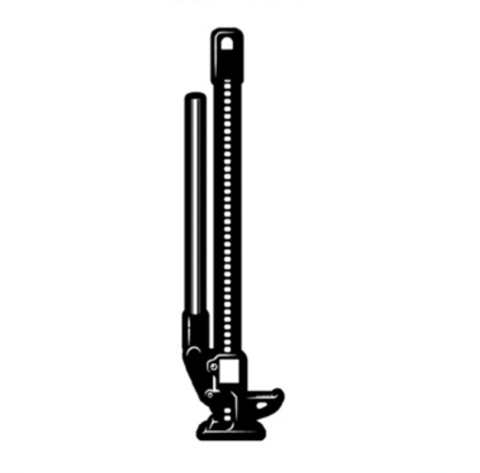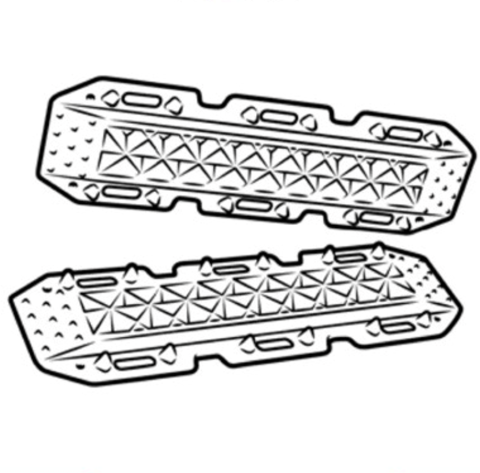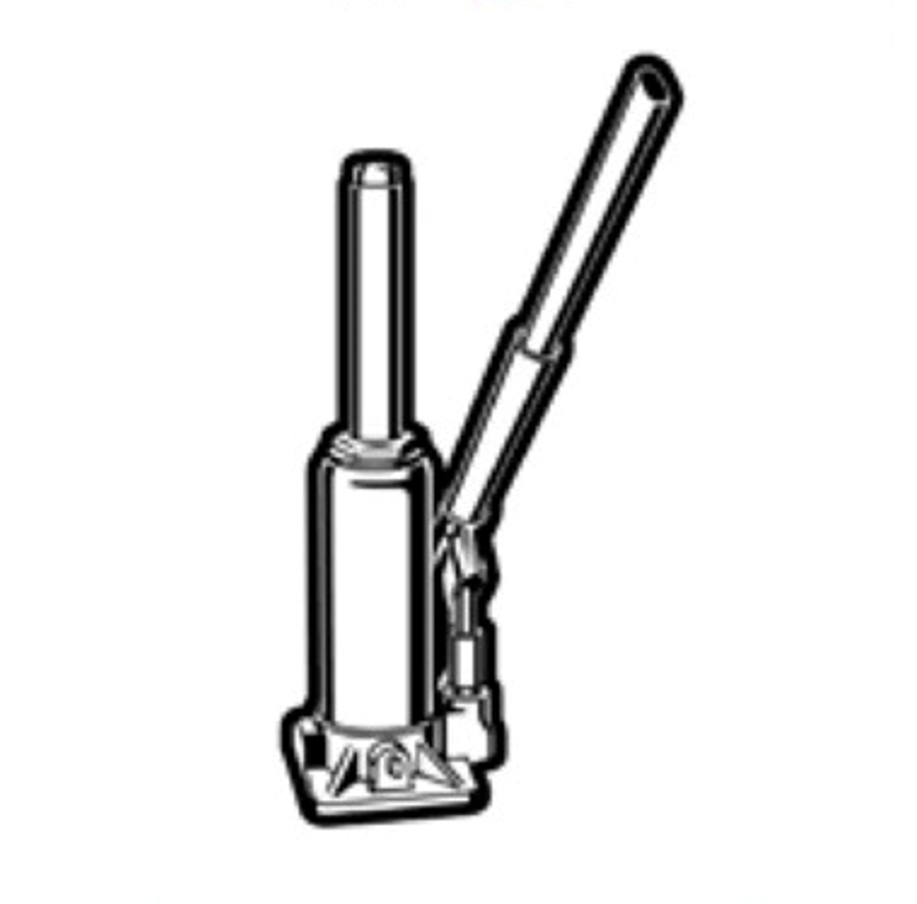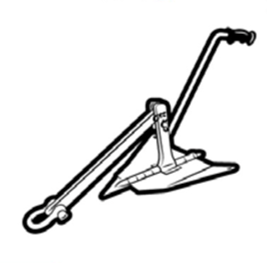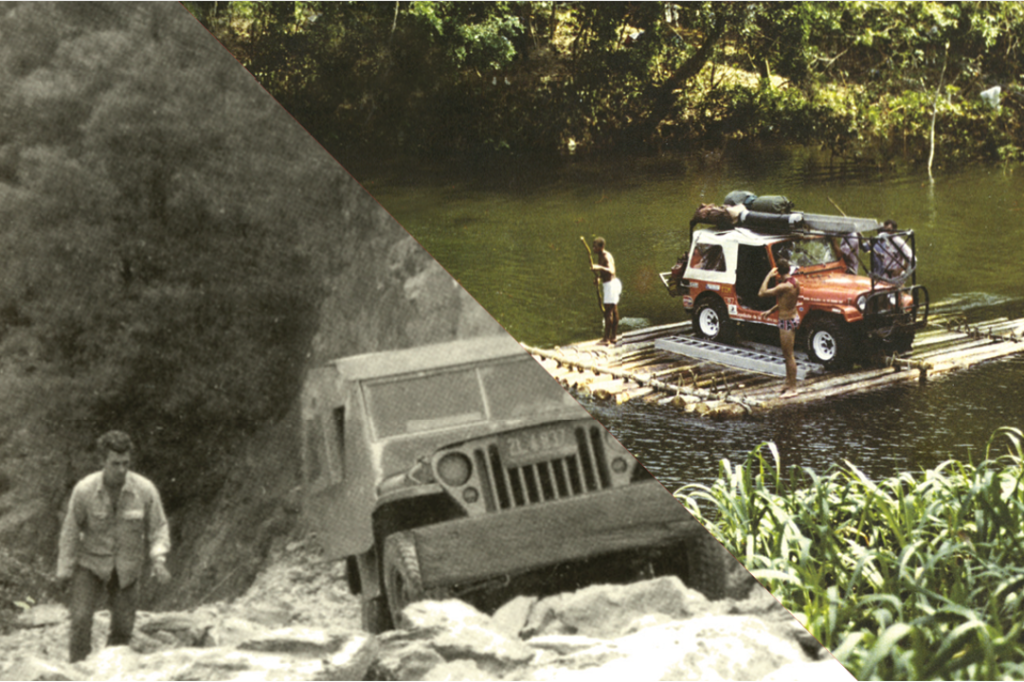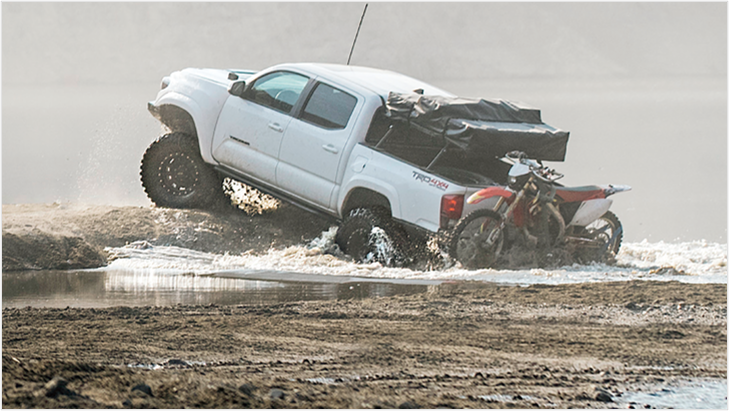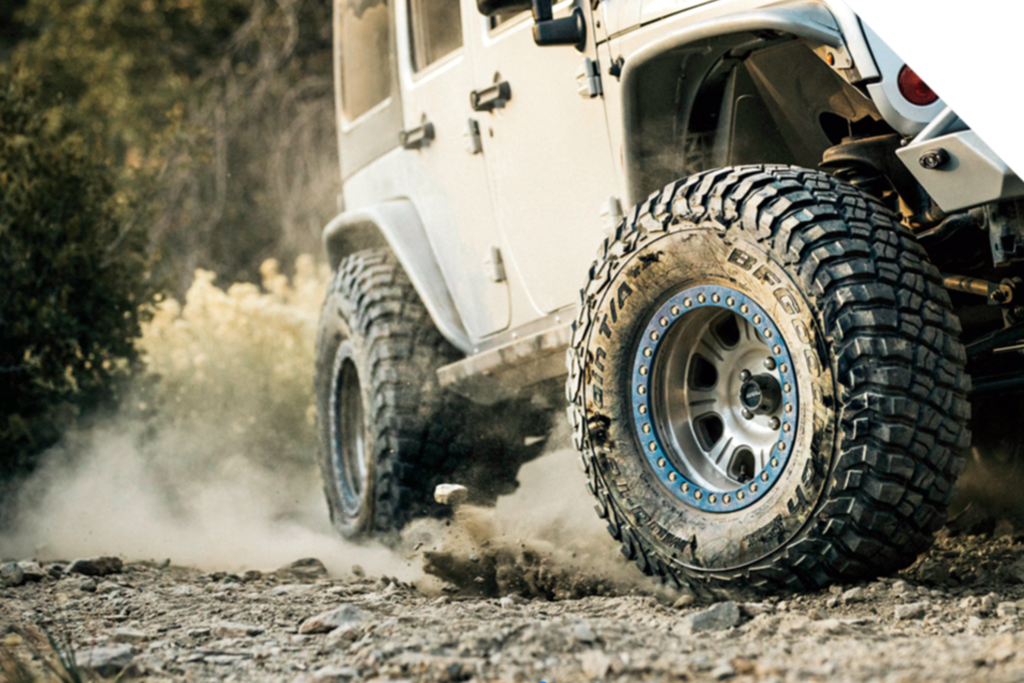Recovery Techniques
Safety should be the highest priority in recovery situations.
Let’s not beat around the bush. If you venture off the pavement with any regularity, you’ll eventually get stuck. But that doesn’t have to be a bad thing. As long as you’re operating in a safe and responsible manner, getting your vehicle unstuck can be a rewarding challenge in itself. It takes practice and skill, not guesswork, so you need to find experienced professionals and get some training beyond this guide to succeed in these situations – and make sure you’re not featured in one of those internet “fail” videos.
There are countless ways that your vehicle can become immobilized on the trail. Recovery techniques and the gear you’ll need will depend on the situation. They say a driver is only as good as their gear, but in terms of recovery, it’s how well you know how to use it.
SECTIONS
- STRAP AND ROPE RECOVERY
- WINCHING 101
- RECOVERY TOOLS
- RECOVERY WATCH-OUTS
STRAP AND ROPE RECOVERY
When you are stuck, self-recovery should always be your first option. There are many ways this can be done, from digging out your tires with a shovel to using one of the winching techniques shown later in the guide. These techniques are your safest alternatives, so only after you’ve exhausted all other options should you bring another vehicle into the process.
Using straps or ropes to pull vehicles free has been around since drivers started getting stuck. This can be one of the simplest methods of freeing a vehicle, but don’t let the convenience fool you. There are many risks involved. However, this technique can be extremely useful when a recovery needs to happen quickly. For instance, if you’re stuck on a beach and the tide’s a comin’, it’s time to strap up. There are two common types of recovery straps.
RECOVERY STRAPS
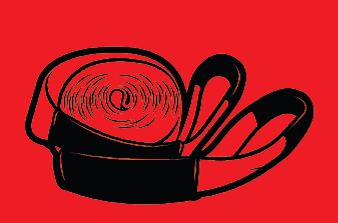
In a low-energy recovery, a mobile vehicle pulls a bogged vehicle free with the use of a strap. Many drivers gravitate to recovery straps because they are cheap and convenient. Made of flat nylon webbing with open loops, a snatch strap will stretch approximately 15%, allowing the strap to store kinetic energy that will be used to free the bogged vehicle. Slack is left in the line to allow the mobile vehicle to sling the stuck vehicle free.
KINETIC RECOVERY ROPE
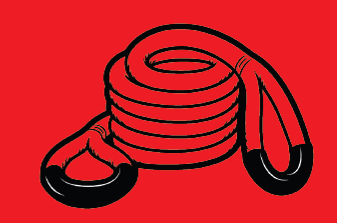
Kinetic recovery ropes are made of stretchy, high-tenacity nylon. These are based on the same concept as the snatch strap, but kinetic recovery ropes rely even more on elasticity to sling the bogged vehicle free – like a rubber band. A kinetic recovery rope will stretch up to 30%, which is significantly more than a recovery strap will stretch. The rope’s capacity to stretch is not only safer, but it is much easier on both vehicles’ recovery points. While it does cost more, a kinetic recovery rope has proven to be the safer and more effective option.
RECOVERY TECHNIQUE

STEP 1: Line up the the mobile recovery vehicle in as straight a line as possible with the bogged vehicle. It should be positioned to allow around 3 feet of slack in the strap or rope.
STEP 2: Attach the rope to each vehicle’s recovery points with a D-ring.
STEP 3: Place a dampener over the rope to protect individuals in the event of a rope snapping.
STEP 4: Pull forward until the slack is gone, and try to slowly pull the bogged vehicle free.

STEP 5: If recovery fails, repeat the process, but give the recovery rope slightly more slack to create more of a whip. The mobile vehicle can also slightly increase its speed.
NEVER join two straps or ropes with a shackle. If the shackle snaps, the kinetic energy can cause a chunk of metal to be hurled at you at the speed of a bullet.
NEVER step over a strap when it is connected at both ends or you could get your leg caught.
DO NOT subject recovery points to side loads.
DO NOT attach a strap to a ball or bumper tow hitch.
DO NOT use a strap for a vehicle completely bogged in mud.
WINCHING 101
The moment has finally arrived – you’re stuck. You’ve tried the old-fashioned way of rocking your vehicle free, but it’s clear your vehicle isn’t going anywhere. Lucky for you, where there’s a winch, there’s a way. A winch is a vital tool for off-roaders and can free up a large vehicle that normally wouldn’t have a prayer. There are many pieces of equipment that go into a safe winching operation, so it’s a good idea to purchase a winch kit. This will provide all of the accessories you’ll need. Before you start your recovery, review these basic techniques that can get your vehicle moving and keep your crew safe.
Key Equipment
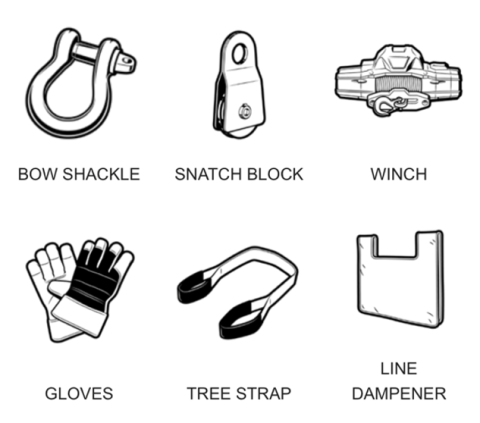
SINGLE-LINE RECOVERY
Single-line or self-recovery is a basic winching technique where a driver uses a large anchor to pull their vehicle free.

STEP 1: Find a suitable winch anchor, such as a rock, a tree or even another vehicle. When using a tree, make sure you use a strap or tree protector. Never wrap the cable around the tree or hook the cable to itself — make sure you are not damaging a defenseless living organism or your equipment.
STEP 2: Choose a winch anchor close enough to the vehicle to allow 4 or 5 wraps around the drum to ensure enough grip on the drum. Any fewer could risk the cable being pulled off the drum, leaving you stranded.
STEP 3: Wearing gloves, drag out your winch cable and connect your winch to the strap using a bow shackle. The hook should be attached open end up to place the load on the hook.
STEP 4: Always place a line dampener over the winch cable to slow it down in case it snaps. This could be a blanket, coat or even a floor mat.
STEP 5: When controlling the winch, the best and safest place to be is in your vehicle. Your power cable will reach through the driver’s window, which will allow you to gently use both the power of the vehicle and the winch to pull you out.
STEP 6: Take time to inspect the winch and make sure it’s spooling property. Take periodic breaks to make sure that the motor of an electric winch won’t overheat.
STEP 7: If you are not an essential part of the operation, stay clear of the cable. A good rule of thumb is to stay back farther than the length of the cable.
DOUBLE-LINE RECOVERY
Sometimes your anchor point will be too close to spool out enough cable to effectively winch your vehicle — or your winch simply doesn’t have the power to free it.
Instead of hooking your winch directly to the tree strap, you can run a line through a pulley, called a snatch block, and back to your vehicle’s tow point. This will double the pulling power of your winch and lessen the recovery time.
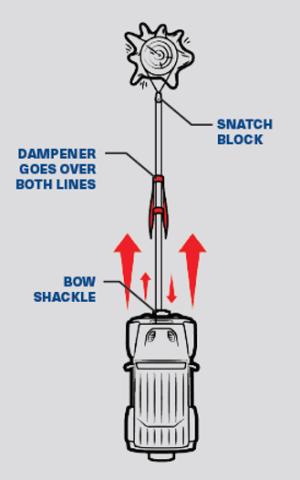
SYNTHETIC ROPE has become the industry standard. While it is susceptible to chafe, it has a much higher breaking point and is safer than traditional wire rope.
RECOVERY TOOLS
The beauty of four-wheeling is that no two trips or recoveries will ever be the same. Not every recovery situation lends itself to winching or pulling out with another vehicle. At times you’ll need to get creative.
Drivers will use a number of tools as well as anything they can get their hands on in the environment. You’ll see everything from jacking out of trouble to using recovery boards or even using the vehicle’s floor mats to aid in regaining traction. There are countless recovery tools out there, but here are a few common pieces of equipment you’ll see.
RECOVERY WATCH-OUTS
Recovery safety should not be taken lightly. One careless error could cause severe damage to your vehicle – or even serious injury or death. Here are a few things you should never do during winch or rope recoveries.
DO NOT winch without gloves.
DO NOT stand next to or straddle a winch cable.
DO NOT jerk the line or use like a snatch strap.
DO NOT drive over your winch cable.
DO NOT hook onto your winch cable.
DO NOT wrap a tree without a tree strap.
DO NOT wrap a tree strap above the base of the tree.
DO NOT winch without a line dampener.
DO NOT run rope over a jagged rock.
DO NOT subject recovery points to side loads.
DO NOT winch at an angle.
DO NOT use a rope or strap to winch.
DO NOT step over a strap when it is connected at both ends.
DO NOT join two straps or rope with a shackle.
DO NOT attach a strap to a ball or bumper tow hitch.
DO NOT use a frayed or damaged strap.
DO NOT recover from non-tow-rated points.
DO NOT use a strap for a vehicle completely bogged in mud.
NEED MORE HELP TO PLAN A TRIP
Our Trip Planning section gives lots of helpful information to get you started.




